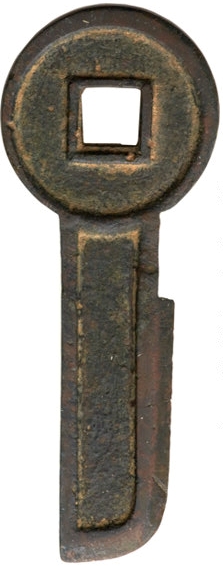China (ancient) 5000 Cash - Wang Mang (First reform)
Posted on:
keywords: China (ancient), 5000 Cash - Wang Mang (First reform), 5000 Cash, coin collecting, numismatics, China (ancient)
- Introduction: The 5000 Cash coin from ancient China, issued during the reign of Wang Mang, holds a special place in numismatic history due to its unique design and historical significance. This bronze coin with gold inlay showcases the craftsmanship and artistic flair of the time.
- Historical Background: Issued between 7 and 9 AD by China's ancient authority, this coin was part of Wang Mang's first reform in an attempt to stabilize the economy. Despite its short circulation period, these coins provide valuable insights into the economic policies and challenges faced during that era.
- Design Features: The obverse of the coin features two Chinese ideograms inlaid with gold on the handle, complemented by three ideograms on the blade. The reverse side remains blank, showcasing a uniface design that highlights the intricate details on the obverse.
- Technical Specifications: This coin weighs 27.32g with a diameter of 78.00mm, making it a substantial piece of ancient currency. Crafted from bronze, the addition of gold inlay adds a touch of opulence to this historically significant coin.
- Collectible Value: The 5000 Cash Wang Mang coin holds significant value among collectors due to its rarity and historical importance. Its unique design and limited circulation period make it a prized possession for numismatists interested in ancient Chinese currency. The market value of these coins reflects their scarcity and desirability among collectors worldwide.
- Conclusion: In conclusion, the 5000 Cash Wang Mang coin stands as a testament to ancient Chinese numismatics and the economic reforms undertaken during Wang Mang's reign. With its exquisite design, historical significance, and collectible value, this coin remains a prized artifact for collectors and enthusiasts alike, preserving a piece of China's rich numismatic heritage.
Coin Images
 Obverse
Obverse
 Reverse
Reverse

